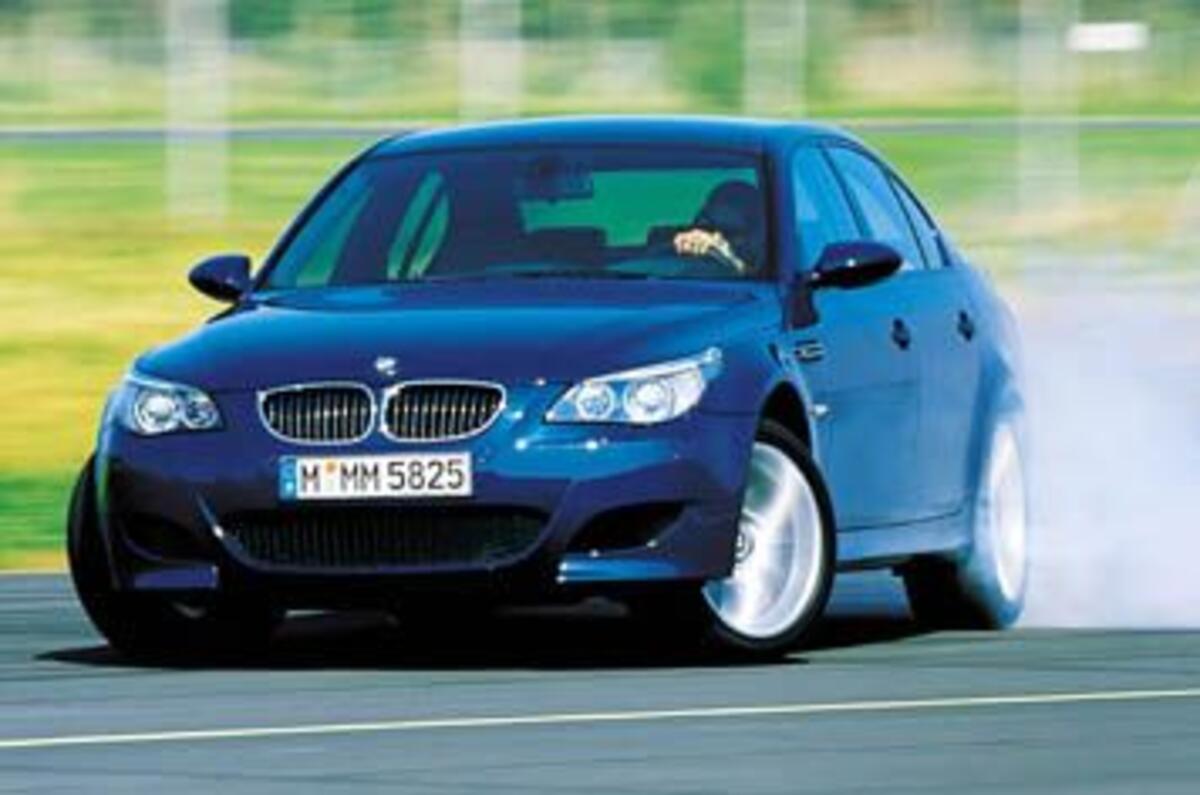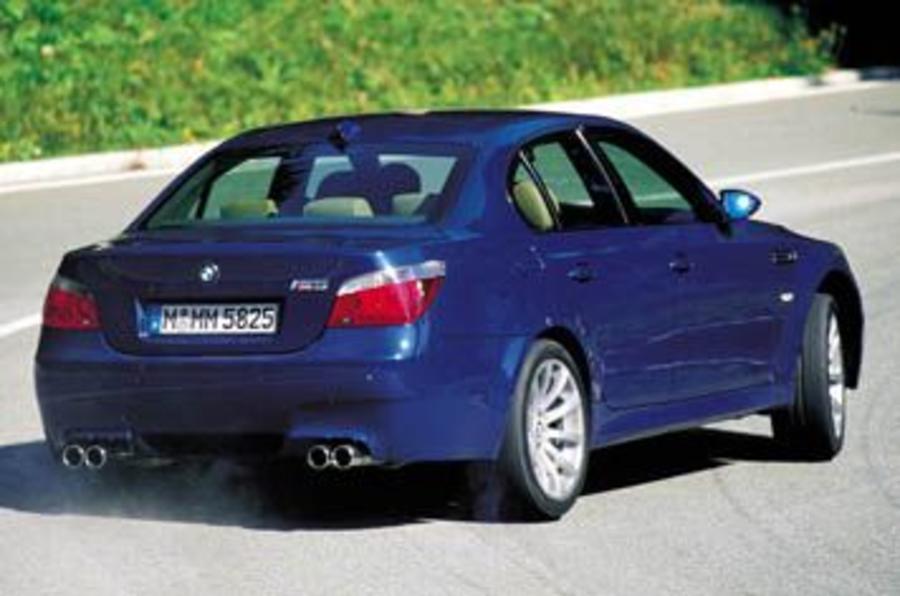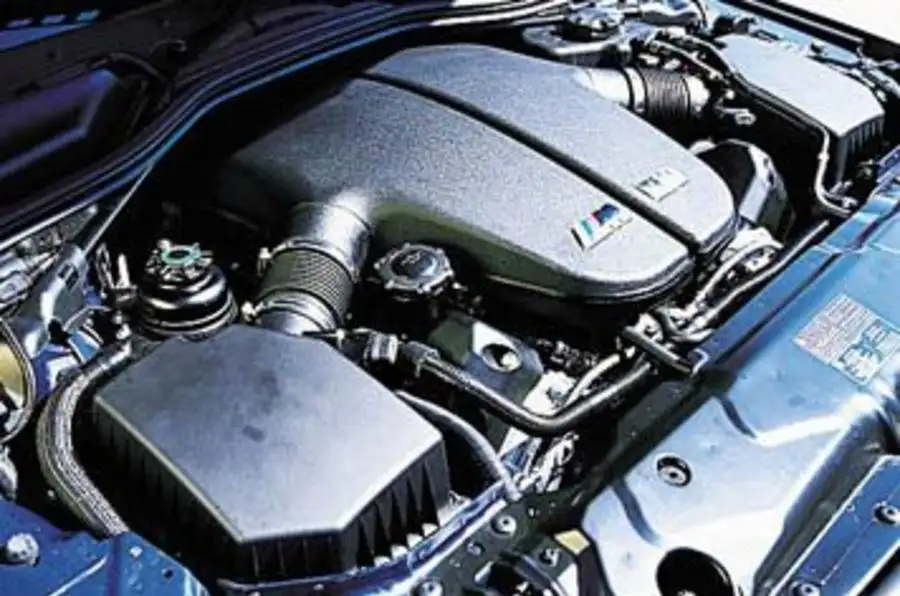Fortune favours the fast. There we were, somewhere south of Munich plodding a route back to BMW’s test centre at the airport. Heavy traffic, stifling 75mph speed limit and the BMW M5.
Dampers set to full soft, gearbox in the slushiest of five possible automatic shift speeds and a squawky Bavarian folk ditty from the radio competing against the tyre noise. Nothing to do but settle and enjoy the cruise.
Until a silver grille rushes upon us and spills over the sides of the rear view mirror. Mercedes-Benz E-Class. Two big vents and a pair of low-slung metal grilles mean only one thing: it’s no lightly AMG’d E320 CDI. We have ourselves an E55.
Then comes the fortune. The derestrict sign flashes past, the gear selector is dabbed right to give the seven-speed sequential mode, adjust the shift speed to Montoya-plus-some then shift back to fourth. BMW v AMG, game-on.
No point in catching him unawares: we want to know who’s faster. So I power-on gradually, give him time to pin his auto ’box into kickdown mode and just as he begins to close the gap and grin at his false advantage, BMW’s epic V10 opens for business.
Instantly the Merc stops gaining, then recedes marginally. Into fifth the process continues, 10 car lengths stretching to 15. Shifting to sixth sends a bolt through the rear axle and as we brush the 155mph speed limiter the Merc is no longer recognisable as an E55. It has been reduced to the silhouette of a basic E-Class.































